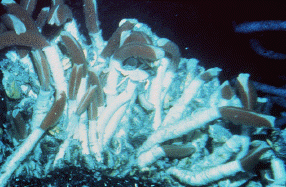These are tubeworms. Each worm is over six feet long and has a protective white tube surrounding a red body that pokes out the top.
Click on image for full size
Image copyright 1997 by the American Geophysical Union. Further electronic distribution is not allowed.
Creatures which live in Difficult Environments
Some animals can live without light or oxygen. Some can live in very cold places or very hot ones. Some live underwater, while others live on land. All animals are different and need different things to survive.
The animals in this picture are called tubeworms. They live in the deep ocean near undersea volcanoes called hydrothermal vents. Each worm is as tall as a basketball player! They make the tubes themselves to protect from crabs and fish that might like to nibble a tasty tubeworm.
What is it like in the tubeworms home? The vents heat the seawater so it's very hot. It is dark there! There is also a lot of pressure from the weight of the water above. That would be an impossible place for people (or their pets!) to live, but the tubeworms survive just fine!
Last modified June 17, 2003 by Lisa Gardiner.
You might also be interested in:
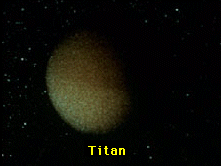
The air of Titan is a lot like the Earth's, except that it is very cold, from -330 degrees to -290 degrees! Like the Earth, there is a lot of Nitrogen and other complex molecules. There also may be an
...more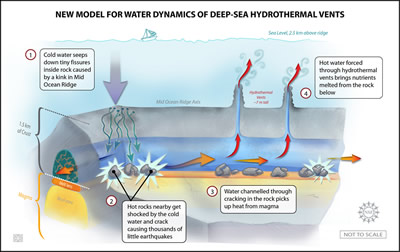
A group of scientists have been studying an area of the ocean floor called the East Pacific Rise, which is about 565 miles southwest of Acapulco, Mexico. The East Pacific Rise is a ridge along the ocean
...more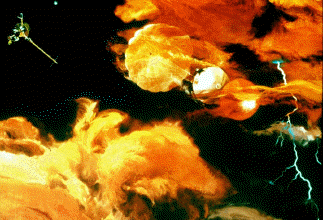
Jupiter's atmospheric environment is one of powerful winds, going 250 miles per hour, and temperatures from -270 degrees to +32 degrees (freezing temperature). These winds make it hard for life forms to
...more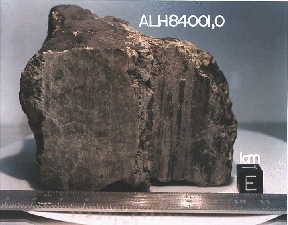
In July, 1996 a team of scientists said that they had discovered possible fossils of bacteria in a meteorite named ALH84001 that came from Mars. It was found in Antarctica in 1984 after having landed there
...more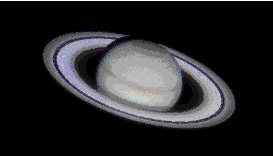
Saturn's atmospheric environment is one of powerful winds, going 250 miles per hour, and temperatures from -270 degrees to +80 degrees. With winds like these, it is hard to have peace and quiet. The region
...more
Organisms that are able to "make their own food" are called autotrophs, meaning "self-feeders". Some examples of autotrophs are plants and algae (shown in the picture). Both plants and algae use photosynthesis
...more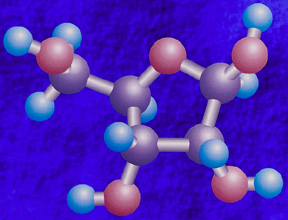
In the warm early ocean, large molecules came together into a form called *coacervates*. Molecules such as these will form coacervates in the same way that beads of vinegar in oil come together. These
...more


